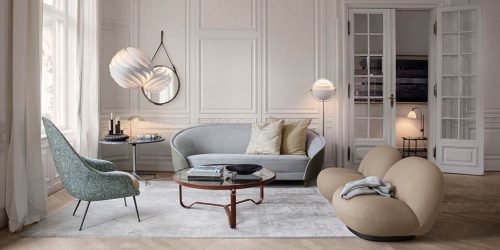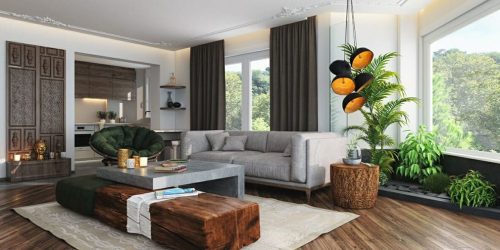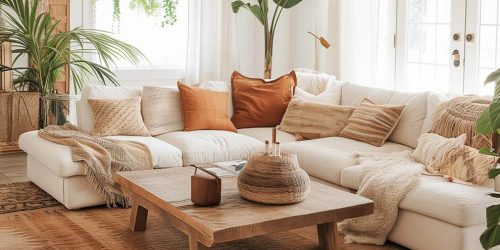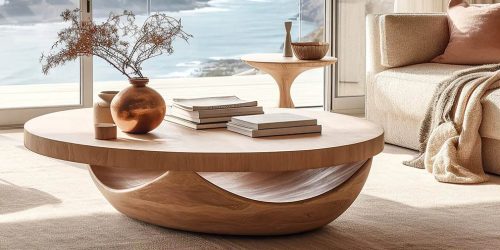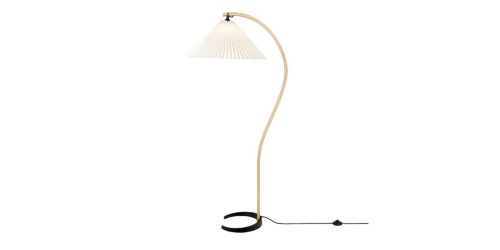Living Room Rugs: How to Choose the Right Size, Color, and Style
A rug can make or break a living room. It’s more than just a decorative piece; it’s a functional element that ties the room together, adds warmth, and creates a cozy ambiance. However, choosing the right rug for your living room can be daunting with so many options available.
1. Why Your Rug Choice Matters
The right rug can set the tone for your entire living room. It can create a focal point, define different areas within a room, and even influence the perception of space. A well-chosen rug can make a small room feel larger or a large room feel more intimate. It can also introduce texture, pattern, and color that enhance your overall design scheme.
However, an ill-fitting rug or the wrong color can disrupt the flow of a room, making it feel disjointed or even uncomfortable. That’s why it’s crucial to consider various factors when choosing a rug, ensuring it complements your living room’s furniture, decor, and layout.
2. Choosing the Right Size
One of the most common mistakes people make when choosing a rug is picking one that’s too small. A rug that’s too small can make the room feel unbalanced, while a larger rug can help anchor the space and create a cohesive look.
Standard Rug Sizes for Living Rooms:
- 5’ x 8’ (1.5m x 2.4m): Ideal for smaller living rooms or under a coffee table. This size works well if you have a compact seating arrangement with all furniture legs off the rug.
- 8’ x 10’ (2.4m x 3m): A versatile size for medium-sized living rooms. In this setup, the front legs of the sofa and chairs should rest on the rug, while the back legs are off.
- 9’ x 12’ (2.7m x 3.6m): Perfect for larger living rooms or open-plan spaces. This size allows all furniture to sit on the rug, creating a unified look.
- Custom Sizes: If your living room has unique dimensions or you want a specific look, consider a custom-sized rug. Many manufacturers offer bespoke options to fit any space perfectly.
How to Measure for the Right Rug Size:
- Furniture Placement: Consider how you want the rug to interact with your furniture. A common approach is to ensure that at least the front legs of your seating arrangement are on the rug. This connects the furniture pieces and creates a harmonious look.
- Room Size: Leave at least 10-20 inches of bare floor around the rug to frame it nicely within the space. This prevents the rug from overwhelming the room and ensures the layout feels balanced.
- Traffic Flow: Ensure the rug is large enough to cover high-traffic areas, preventing tripping hazards and protecting your floors.
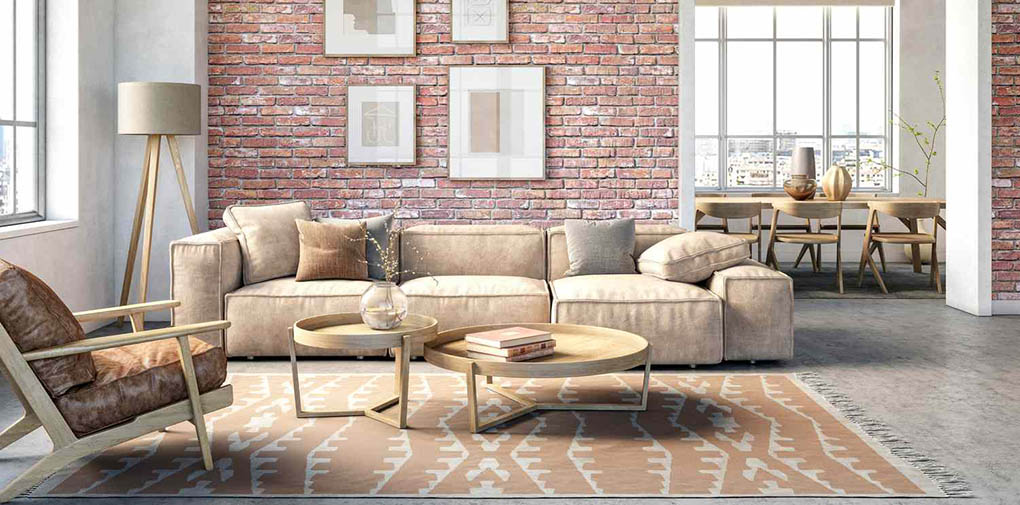
Practical Tip:
Before purchasing, use painter’s tape to outline the dimensions of the rug on your floor. This visual guide helps you understand how the rug will fit and interact with your furniture.
3. Finding the Perfect Color
The color of your rug can dramatically affect the mood and aesthetic of your living room. It can complement your existing decor or serve as a bold statement piece. Here’s how to choose the right color:
Neutral Rugs:
- Versatility: Neutral colors like beige, gray, or white are incredibly versatile. They blend seamlessly with various design styles and allow other elements in the room, like furniture or artwork, to shine.
- Subtlety: If your living room already has bold colors or patterns, a neutral rug can tone down the space and create balance.
- Light vs. Dark: Light-colored rugs can make a room feel more spacious and airy, while dark rugs add warmth and coziness. However, consider your lifestyle—light rugs are prone to stains, whereas darker rugs are more forgiving.
Bold Colors:
- Focal Point: A rug with a bold color can serve as the room’s focal point. If your living room features mostly neutral tones, a vibrant rug can add personality and interest.
- Complementary vs. Contrasting: Choose a rug color that complements your existing palette or opt for a contrasting shade to create visual tension. For example, a deep blue rug pairs beautifully with warm wooden furniture, while a bright red rug pops against neutral walls.
- Matching Decor: If your living room has accent colors, consider choosing a rug that matches or complements those hues. This creates a cohesive look and ties the room together.
Patterned Rugs:
- Hiding Stains: Patterned rugs are excellent for busy households as they can effectively hide stains and wear. Patterns can range from subtle textures to bold geometric designs.
- Mixing Patterns: If your living room already has patterned furniture or wallpaper, be mindful of mixing patterns. Ensure the patterns complement rather than clash. A rule of thumb is to vary the scale of patterns—pairing a large-scale patterned rug with smaller patterns in the room.
- Directional Influence: The pattern on a rug can influence the perception of space. Horizontal stripes, for example, can make a room appear wider, while vertical patterns can elongate the space.
Practical Tip:
Bring home swatches or small samples of rug colors you’re considering. Test them in your living room at different times of the day to see how the colors interact with your natural and artificial lighting.
4. Selecting the Right Style
Rug styles are as diverse as the decor styles they complement. The key is to choose a rug that not only matches your living room’s aesthetic but also adds to its character. Here’s how to choose:
Traditional Rugs:
- Characteristics: Traditional rugs often feature intricate patterns like florals, medallions, or oriental designs. They’re usually rich in detail and color, adding a sense of history and elegance to a room.
- Best For: If your living room has a classic, formal, or vintage aesthetic, a traditional rug can enhance the atmosphere. These rugs pair beautifully with antique furniture, ornate decor, and wood finishes.
Modern/Contemporary Rugs:
- Characteristics: Modern rugs typically feature clean lines, geometric patterns, or abstract designs. They often embrace minimalism with a focus on texture and subtle color variations.
- Best For: Perfect for living rooms with a contemporary, minimalist, or mid-century modern design. These rugs can add sophistication and a touch of artistry to the space.
Bohemian Rugs:
- Characteristics: Bohemian rugs are known for their eclectic mix of colors, patterns, and textures. They often have a vintage or distressed look, with vibrant hues and intricate designs.
- Best For: Ideal for a living room that embraces a free-spirited, eclectic, or globally inspired aesthetic. These rugs can add warmth and personality, making the space feel inviting and lived-in.

Shag Rugs:
- Characteristics: Shag rugs have a deep, plush pile, making them incredibly soft and luxurious underfoot. They come in various materials, from wool to synthetic fibers.
- Best For: If comfort and coziness are your top priorities, a shag rug is perfect. It works well in casual living rooms, especially those designed for lounging and relaxation.
Natural Fiber Rugs:
- Characteristics: Rugs made from natural fibers like jute, sisal, or seagrass are durable and environmentally friendly. They often feature a neutral palette and a coarse texture.
- Best For: Great for living rooms with a rustic, coastal, or eco-conscious design. These rugs add a touch of nature and are perfect for layering with other rugs for added texture.
Vintage Rugs:
- Characteristics: Vintage or distressed rugs offer a timeless appeal. They often feature faded colors and worn patterns, giving them a unique, lived-in look.
- Best For: A vintage rug can add character to any living room, especially those with a traditional, bohemian, or eclectic design. They work well with both antique and contemporary furniture, creating a curated, collected-over-time feel.
Practical Tip:
When selecting a style, consider the overall theme of your living room and how the rug will complement the existing furniture and decor. Don’t be afraid to mix styles—sometimes, a modern rug can be the perfect counterpoint to a traditional room, and vice versa.
5. Placement and Layering
How you place your rug in the living room can affect the room’s flow and comfort. Here are some common placement strategies:
Under the Coffee Table:
- Small Rug: A small rug under just the coffee table creates a distinct focal point, especially in compact living rooms. Ensure the rug is large enough so that it’s visible around the edges of the table.
Under All Furniture:
- Large Rug: For a cohesive look, opt for a rug large enough to fit all furniture on top of it. This approach works well in spacious living rooms, creating a unified seating area.
Front Legs Only:
- Medium Rug: Position the rug so that the front legs of your sofa and chairs rest on it while the back legs remain off. This is a popular approach that connects the furniture without overwhelming the space.
Layering Rugs:
- Texture and Style: Layering rugs can add depth and texture to your living room. Start with a larger, neutral base rug and add a smaller, patterned or textured rug on top. This technique is great for introducing color and pattern without committing to a single large rug.
- Visual Interest: Layering allows you to play with different styles and materials, creating a more dynamic and personalized space.
Practical Tip:
When layering, ensure the top rug is at least two-thirds the size of the bottom rug. This proportion maintains balance and prevents the top rug from looking too small.
6. Materials and Durability
The material of your rug influences not only its look and feel but also its durability and maintenance needs. Here’s a breakdown of common rug materials:
Wool:
- Pros: Wool rugs are incredibly durable, naturally stain-resistant, and have excellent texture. They’re soft underfoot and provide good insulation.
- Cons: Wool rugs can be more expensive and may shed initially. They require regular vacuuming to maintain their appearance.
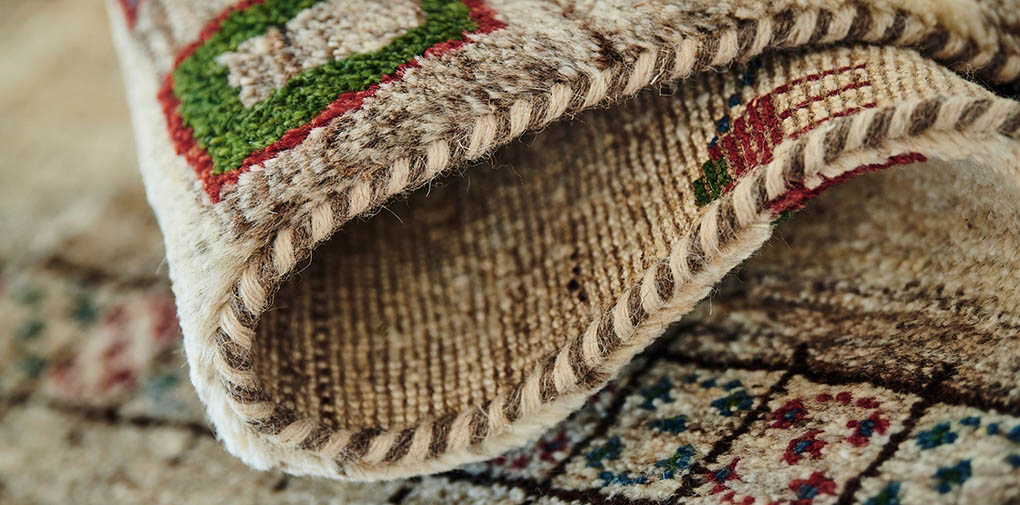
Cotton:
- Pros: Cotton rugs are lightweight, easy to clean, and often more affordable. They’re available in various colors and patterns.
- Cons: Cotton is less durable than wool and may wear out faster, especially in high-traffic areas.
Synthetic Fibers (Nylon, Polyester, Polypropylene):
- Pros: Synthetic rugs are budget-friendly, resistant to stains and fading, and come in various styles. They’re ideal for households with kids or pets.
- Cons: While durable, synthetic rugs can feel less luxurious and may not last as long as natural fiber rugs.
Silk:
- Pros: Silk rugs are luxurious, with a sheen and softness that’s unmatched. They’re often used in more formal settings.
- Cons: Silk is delicate and requires professional cleaning. It’s also one of the more expensive rug materials.
Jute/Sisal:
- Pros: Natural fiber rugs like jute and sisal are durable and eco-friendly. They add a rustic, earthy feel to a room.
- Cons: These rugs can be rough underfoot and are more challenging to clean. They’re best suited for low-traffic areas.
Leather:
- Pros: Leather rugs are unique, with a distinctive texture and appearance. They’re durable and easy to clean.
- Cons: Leather can be slippery and may not provide the warmth or comfort of softer materials.
Practical Tip:
Choose a material that suits your lifestyle. For example, if you have children or pets, opt for a synthetic or wool rug that’s easy to clean and can withstand wear and tear.
7. Rug Maintenance and Care
To keep your rug looking its best, regular maintenance is essential:
Vacuum Regularly:
- Frequency: Vacuum your rug at least once a week to remove dirt and debris. For high-traffic areas, consider vacuuming more frequently.
- Technique: Use a vacuum with adjustable suction to avoid damaging the fibers. For delicate materials like silk or shag, use a handheld attachment.
Rotate Your Rug:
- Prevent Fading: Rotate your rug every few months to ensure even wear and prevent fading from sunlight exposure.
Address Spills Immediately:
- Blot, Don’t Rub: If you spill something on your rug, blot the area with a clean cloth or paper towel. Avoid rubbing, as this can push the stain deeper into the fibers.
- Use a Mild Cleaner: For stubborn stains, use a mild detergent or a cleaner specifically designed for rugs. Always test the cleaner on a small, inconspicuous area first.
Professional Cleaning:
- Frequency: Depending on the material and traffic, have your rug professionally cleaned every 12-18 months.
- Special Care: Rugs made of delicate materials like silk or antique rugs require specialized care. Consult a professional to ensure proper treatment.
Practical Tip:
Invest in a rug pad to extend the life of your rug. Rug pads prevent slipping, provide additional cushioning, and reduce wear by absorbing impact.
Choosing the right rug for your living room is about more than just aesthetics; it’s about creating a space that feels comfortable, cohesive, and true to your style. By considering size, color, style, and material, you can find a rug that not only enhances your living room but also stands the test of time.
